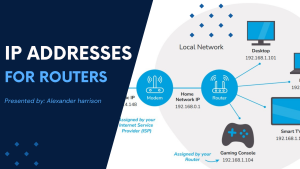In today’s digital landscape, where data is generated and consumed at an unprecedented pace, efficient storage and seamless data transfer are critical for businesses and organisations of all sizes. Host bus adapters stand at the forefront of enabling high-speed connectivity between host systems, such as servers, and storage or network devices. This comprehensive guide explores the multifaceted world of HBAs, their diverse types, and their pivotal role in modern computing environments.
Understanding Host Bus Adapters

At its core, a Host Bus Adapter (HBA) serves as the essential link between a host system and storage or network devices. Whether it’s a server accessing data from a storage array or a network device communicating with a central processing unit (CPU), HBAs facilitate seamless data transfer, optimizing system performance, and relieving the host’s microprocessor of excessive workload during I/O operations.
HBAs come in various forms, ranging from standalone circuit boards to integrated circuit adapters. The most common form factor is the HBA card, which typically interfaces with the host system through Peripheral Component Interconnect Express (PCIe) slots. However, HBAs are versatile and can adapt to different form factors, including mezzanine cards for
blade servers, to accommodate diverse computing architectures.
While HBAs support a wide array of interconnect technologies, they are predominantly associated with storage protocols such as Fibre Channel (FC), Small Computer System Interface (SCSI), Serial Advanced Technology Attachment (SATA), and Serial-Attached SCSI (SAS).
Exploring Different Types of HBAs

Fibre Channel HBAs: Fibre Channel HBAs are instrumental in facilitating connectivity and data transfer within Fibre Channel-based Storage Area Networks (SANs). These HBAs have witnessed significant advancements in data rates over the years, evolving from 1 gigabit per second (Gbps) to 64 Gbps (Gen 7), with the potential to reach 128 Gbps in the near future. Major players in this domain include industry stalwarts like Marvell QLogic, Broadcom (formerly Emulex), Atto Technology, and Hewlett-Packard Enterprise (HPE).
SCSI Adapters/SCSI HBAs: While parallel SCSI HBAs were once ubiquitous for data transfer, they have largely been supplanted by faster alternatives like SAS. However, SCSI HBAs still find utility in legacy systems that rely on parallel SCSI technology, albeit to a lesser extent in modern computing environments.
SAS and SATA HBAs: Serial Attached SCSI (SAS) HBAs have emerged as the successors to parallel SCSI, offering enhanced data transfer rates and improved functionality. These HBAs serve as the conduit between host systems and storage devices such as hard disk drives (HDDs) and solid-state drives (SSDs), with bandwidths ranging from 3 Gbps to 12 Gbps. Market leaders in this segment include industry titans like Dell, HPE, and IBM.
The Role of Other Network Adapters

In addition to HBAs, various other network adapters play a pivotal role in facilitating seamless connectivity and data transfer:
- Network Interface Cards (NICs): NICs enable the communication between hosts and network devices over Ethernet, forming the backbone of modern networking infrastructure.
- iSCSI Adapters: These adapters provide Storage Area Network (SAN) connectivity over TCP/IP and Ethernet networks, offering a cost-effective alternative to traditional Fibre Channel SANs.
- Converged Network Adapters (CNAs): CNAs combine the functionalities of Fibre Channel HBAs and Ethernet NICs, supporting both LAN and SAN traffic over a unified network infrastructure.
- Host Channel Adapters (HCAs): HCAs facilitate low-latency data communication in InfiniBand networks, catering to high-performance computing (HPC) and cloud computing environments where speed and efficiency are paramount.
- Remote Direct Memory Access over Converged Ethernet (RoCE) NICs: These NICs accelerate data transfers between servers on lossless Ethernet networks, particularly suited for high-volume transactional applications and storage-centric workloads.
Conclusion
In the fast-paced realm of modern computing, where data is the lifeblood of organizorganisations,portance of efficient connectivity and high-performance data transfer cannot be overstated. Host Bus Adapters play a pivotal role in bridging the gap between host systems and storage/network devices, enabling seamless data operations and optimizing system performance. By understanding the diverse types and functionalities of HBAs, businesses can harness the power of these essential components to build robust computing infrastructures capable of meeting the ever-growing demands of the digital age.
1. What is the role of HBAs in computing?
- HBAs connect host systems to storage/network devices, facilitating efficient data transfer and optimizing system performance.
2. What types of HBAs are available?
- HBAs come in various forms, including standalone cards and integrated adapters, supporting storage protocols like Fibre Channel, SCSI, SATA, and SAS.
3. What are the key features of different HBAs?
- Fibre Channel HBAs enable high-speed data transfer within SANs, while SAS and SATA HBAs offer enhanced performance for storage devices.
4. What other network adapters complement HBAs?
- NICs, iSCSI Adapters, CNAs, HCAs, and RoCE NICs play vital roles in facilitating seamless connectivity and data transfer in computing environments.
5. Why are efficient connectivity and data transfer crucial in modern computing?
- Efficient connectivity and high-speed data transfer are essential for optimizing system operations and meeting the demands of today’s digital landscape.





